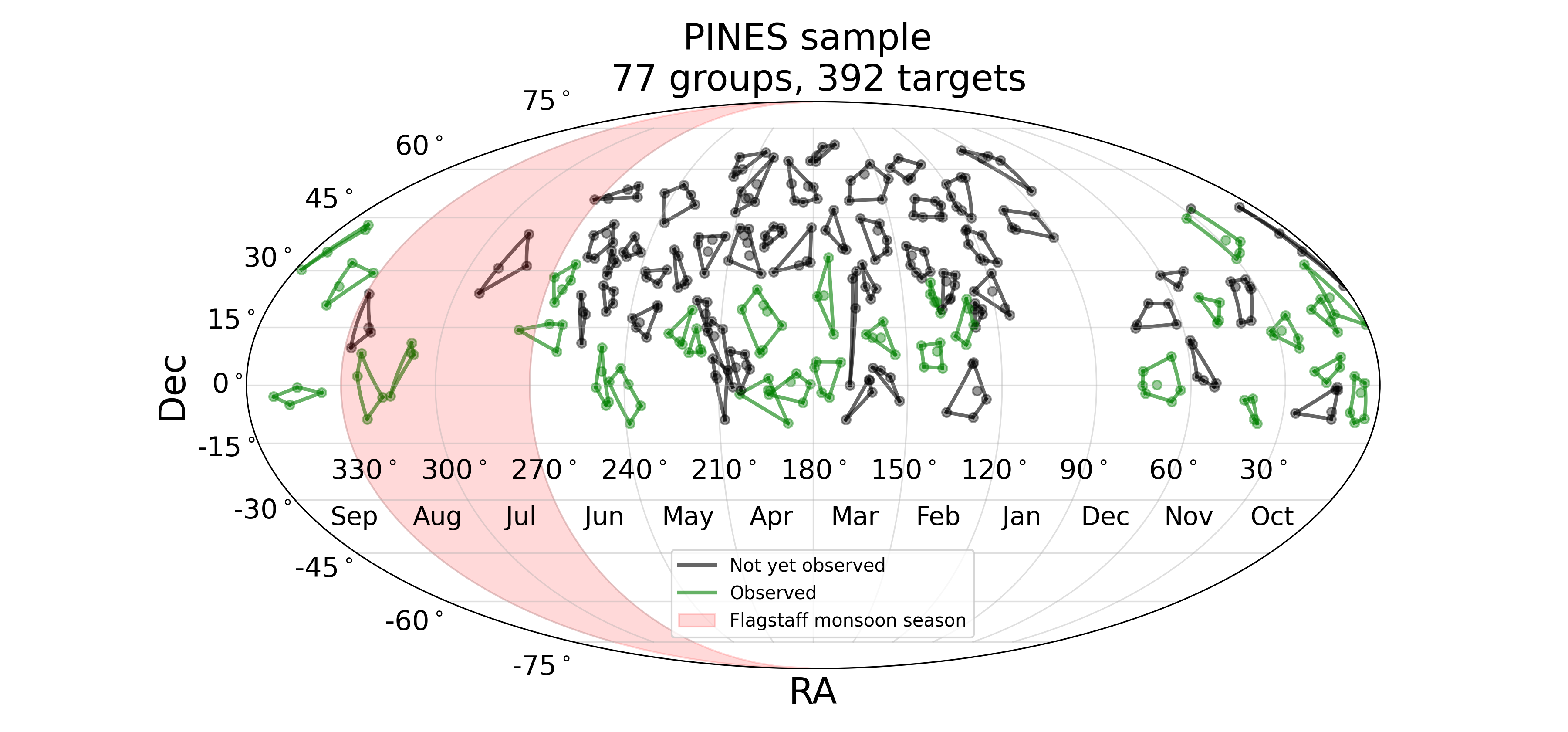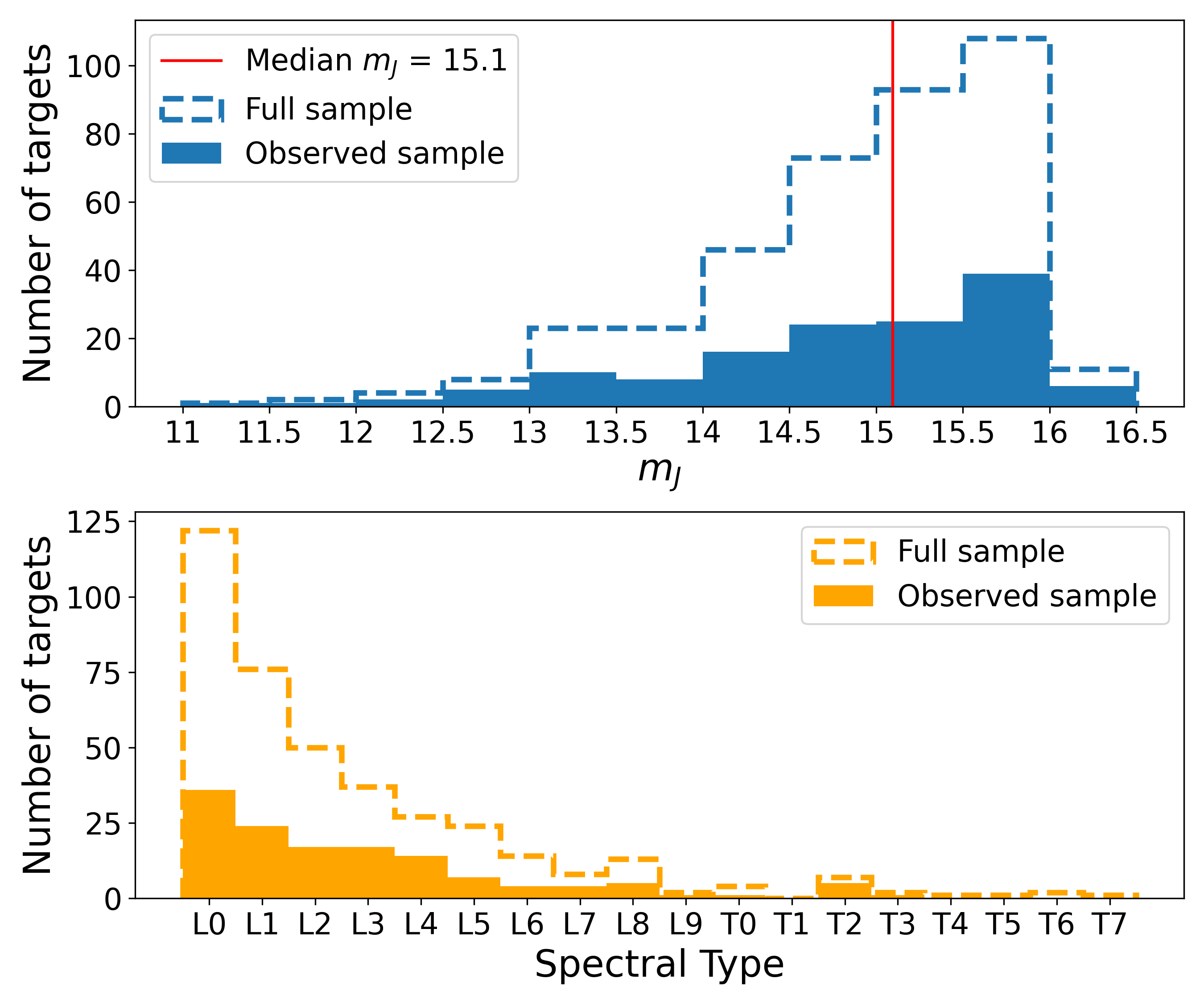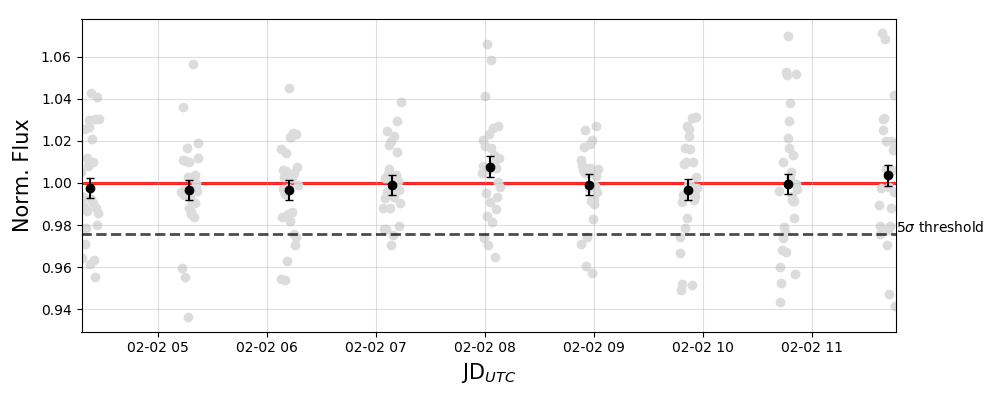To date, PINES has observed 137 L/T targets.

The PINES Sample
The above figure shows an up-to-date sky map of the PINES sample, which consists of almost 400 spectroscopically confirmed L and T dwarfs (black and green points). The sample is magnitude-limited with an J-band cutoff of 16.5, which was chosen to allow for the detection of sub-Neptune-sized transiting satellites around the bulk of the sample. Distributions of target magnitudes and spectral types are given below. The magnitude cutoff biases the sample towards early L dwarfs, which are intrinsically brighter than later spectral types. The median J-band magnitude of the sample is 15.1.

Observing Strategy
PINES is conducted using 10 nights of observing time each month. The survey began in January 2020, and will continue through the end of 2022. We use the observing strategy detailed in Tamburo & Muirhead (2019), which was designed to maximize planet yield over a three-year survey with a single telescope. This strategy requires observing multiple targets every night, cycling between 4-7 L/T targets every hour to search for partial transit events. Every target in the sample is assigned to an observing "group", as indicated by the lines shown in the sky map at the top of the page. Each group is dedicated five nights of observing time. An example lightcurve, showing one night of data for one of our targets, is shown below.

Facility and Instrument
The PINES survey is conducted using Boston University's 1.8-m Perkins Telescope equipped with Mimir, a near-infrared imager, spectrometer, and polarimeter. We use Mimir in its J- and H-band imaging modes, which Tamburo & Muirhead (2019) found maximizes signal-to-noise for optically faint L and T targets. Mimir's 10'x10' field of view allows for simultaneous photometry of many suitable reference stars, which we use to remove effects due to changing observing conditions. An image of Perkins with Mimir attached is shown below.
